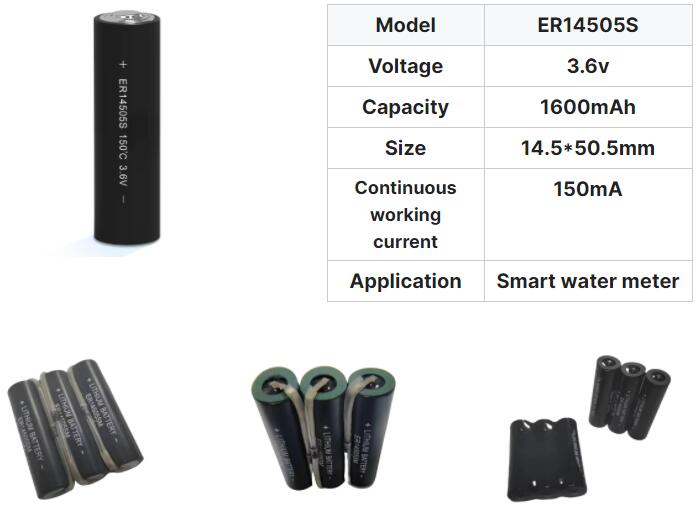High temperature battery ER14505S Primary Lithium Thionyl Chloride (Li-SOCl₂) Battery in Geological Exploration Applications
High temperature battery ER14505S Primary Lithium Thionyl Chloride (Li-SOCl₂) Battery in Geological Exploration Applications

Introduction
In the realm of specialized batteries, the High temperature battery ER14505S Primary Lithium Thionyl Chloride (Li-SOCl₂) battery stands out as a reliable and high-performance energy source, particularly suited for demanding environments that necessitate high-voltage output and extreme temperature tolerance. This article delves into the intricacies of the ER14505S battery, exploring its unique chemistry, design features, applications in high-temperature settings, and its pivotal role in geological exploration. We will also discuss the advantages it offers over conventional battery technologies, as well as the challenges associated with its disposal and environmental considerations.
Understanding the ER14505S Battery: Chemistry and Construction
The High temperature battery ER14505S battery belongs to the family of primary lithium batteries, characterized by their non-rechargeable nature and use of lithium metal as the anode. Specifically, the ER14505S employs Lithium Thionyl Chloride (Li-SOCl₂) as its electrolyte, which imparts several distinct advantages over other battery chemistries.
The Li-SOCl₂ chemistry boasts a high theoretical energy density, translating into extended operating life and the ability to deliver a steady voltage of 3.6V throughout most of its discharge cycle. This voltage stability is crucial for applications that require precise power delivery without significant voltage fluctuations. Furthermore, the Li-SOCl₂ system exhibits an excellent shelf life, with many High temperature battery ER14505S batteries retaining over 80% of their initial capacity after several years of storage, making them ideal for backup and emergency power systems.
Structurally, the High temperature battery ER14505S follows the AA battery form factor, a standardized size widely used in portable electronics. However, its internal design and materials differ significantly from conventional alkaline or NiMH AA batteries. The battery's construction typically involves a stainless steel or nickel-plated steel case, a lithium metal anode, a porous carbon cathode, and the Li-SOCl₂ electrolyte held within a separator layer. This design ensures efficient ion transfer while preventing direct contact between the anode and cathode, which could lead to short circuits.
High-Temperature Performance: Where the ER14505S Excels
One of the most notable features of the High temperature battery ER14505S battery is its ability to function effectively in extreme temperatures, well beyond the limits of many other battery types. Conventional alkaline and NiMH batteries typically have an operating temperature range of -20°C to 60°C, with performance degrading rapidly outside these bounds. In contrast, the High temperature battery ER14505S can operate reliably in temperatures ranging from -55°C to +85°C, making it the go-to choice for applications exposed to harsh environmental conditions.
This high-temperature tolerance is particularly valuable in industries such as aerospace, automotive, and oil & gas exploration, where equipment must function flawlessly in extreme heat or cold. For instance, in deep-sea oil drilling operations, where temperatures can soar due to geothermal activity or proximity to magma chambers, the ER14505S battery ensures that critical sensors, monitors, and communication devices remain operational. Similarly, in spacecraft, where solar arrays may be ineffective during interplanetary travel or eclipse periods, the battery's high-temperature performance guarantees reliable power supply.
Geological Exploration: A Natural Fit for the ER14505S
The geological exploration industry relies heavily on portable, rugged, and long-lasting power sources to support a wide range of activities, including seismic surveys, drilling operations, and data acquisition. The High temperature battery ER14505S battery, with its high energy density, extended shelf life, and exceptional temperature resilience, is an ideal choice for these applications.
During seismic surveys, the High temperature battery ER14505S powers seismometers and data loggers deployed in remote and inaccessible locations. These devices must withstand extreme temperature fluctuations, both diurnal and seasonal, while continuously transmitting high-resolution seismic data. The battery's stability under such conditions ensures uninterrupted data acquisition and transmission, vital for accurate geological mapping and resource assessment.
In drilling operations, the High temperature battery ER14505S finds application in downhole tools and instruments, such as drill-bit sensors, logging probes, and mud motors. The high-temperature tolerance of these batteries is crucial in deep, hot wells, where conventional batteries would quickly fail. By providing reliable power deep within the earth's crust, the High temperature battery ER14505S enables real-time monitoring of drilling parameters, optimizing drilling efficiency and safety.





